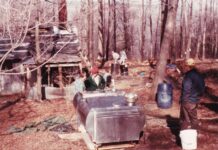The oldest cow on record died in Ireland in 1993 at the age of 49, having been born on St. Patrick’s Day 1944 in Kerry and producing 39 calves over time. So she missed a few years — big deal. She was in a herd that allowed for maximum longevity.
Cow’s life span
Typically, cows live no more than 22 years, and in most productive beef herds, half that age may take senior honors. Chronologically gifted cows can be a good thing for your bottom line as a beef producer, but not always.
‘Darn it, she’s bred again.’ That remark has been made chuteside during annual pregnancy exams far too often. It implies pregnancy trumps all other considerations in your decision on whether to keep a cow. It shouldn’t; but OK, it’s not that simple.
The cow is a survivor and a leader, but not in a good way. Too smart for your liking, if ever a splinter group decides not to trail into the corral, you notice her smug eyes regarding you from the pond dam. Her calves wean off a little above average, but they don’t grade Choice, and you SURE don’t want her daughters. In baseball, you’d say she lives with a full count and keeps getting the walk.
Sometimes the bank has an interest in your inventory. You knew there would be a trailerload of open cows, based on the odds and size of your herd. You were just hoping she would be on that trailer instead of the gentle 4-year-old that had such a promising start.
“Work her?” asks the vet.
“Yeah, I guess so. One more year.”
Should you simply wait until she’s 22 and the vet calls her open? There has to be a better plan.
Replacement heifer herd
For starters, you could beef up your replacement heifer inventory, or buy enough extra replacements to allow you to cull cows based on more than pregnancy status.
The two most common other criteria for culling are disposition and teeth. You already know the urgency to cull wild ones, which should earn an instant strikeout if they threaten the safety of anyone in routine processing.
You don’t need such a strict rule on age or teeth, but make sure the old girls still earn their keep. Some of them are still contributing replacements as the foundation of your increasingly uniform herd. As long as they’re still keeping up, you can hope for one more heifer out of the last mating to a herd-improving bull.
Culling strikes
Other culling strikes can come from chronically late calving date, weaning in the bottom 10 percent the last two years, bottom 20 percent (or pick a number) in postweaning gain and in many herds, two or more years of grid discounts as finished animals.
Today’s market rewards carcass merit, as well as management that delivers good health. You’ll be a step ahead if you characterize feedlot gain and carcass value by working with a service-oriented feedlot, or perhaps your state extension value discovery program. Not all grid discounts come from genetic or ranch faults, but look for patterns over a few years.
Some herds have such excellent carcass merit because of disciplined, long-term sire selection, little can be gained by culling for these traits — but that’s not true for most herds.
Rapid genetic turnover
One proven strategy in some high-quality herds is rapid genetic turnover while selling bred cows in their prime, thus avoiding sales of cull cows by the pound.
An opposite approach is to select for longevity, saving money by stretching development cost over more years. That works if the cows are worthy, because you can be more selective in keeping ideal heifers, but it’s no claim to fame keeping old cows that produce beef nobody really craves.
Breed associations are beginning to offer genetic selection tools such as EPDs (expected progeny differences) that can help you compare bulls as to how long their daughters might remain in your herd.
Plan on producing the kind you really want to keep safe in calf each year. They’ll work for you, the next buyer and the consumer.












